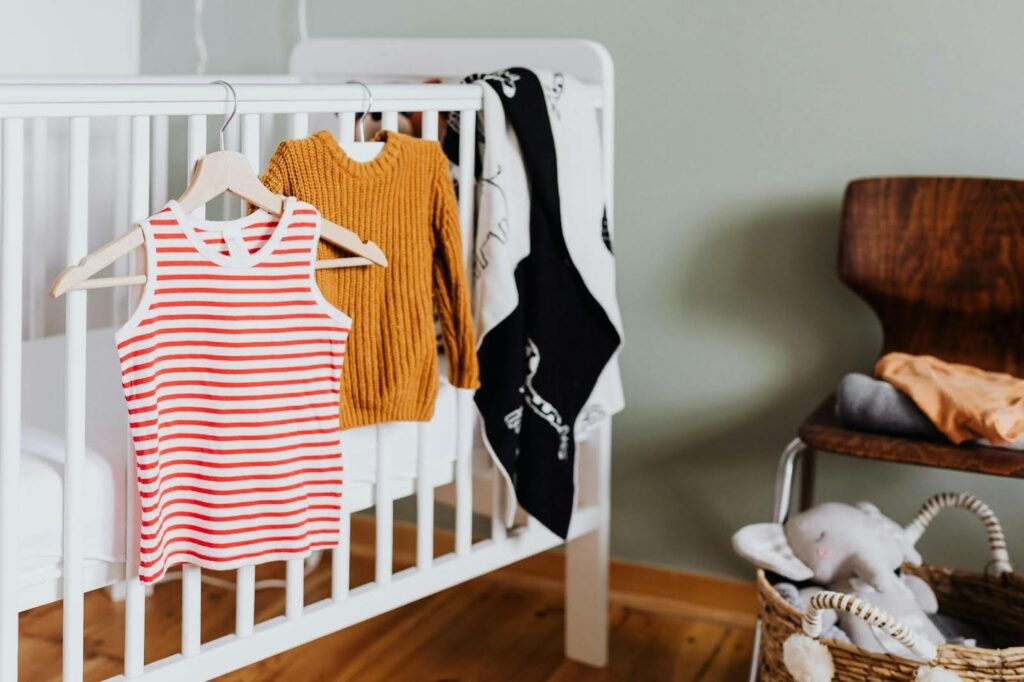Gearing up for a baby is a glorious and exhilarating transition that is teeming with excitement, anticipation, and extensive preparations. Gathering essentials, especially baby clothes, is a crucial step. Enthusiastic yet tentative first-time parents may feel engulfed by the expansive selection of garments. Trendy onesies, elegant sleepers, and timeless bodysuits elevate the choices, making it vital to gauge quality and comfort for a terrific start.
Understanding Baby Clothes Basics
Adorable pieces of baby clothes come in plush fabrics, tailored sizes, and thoughtfully designed styles, all crafted to amplify comfort and promote ease for both the child and caregiver. The primary aim is to keep the baby protected, toasty, and tucked in softness while ensuring that dressing and diaper changes remain painless and timely. Since newborns progress so tremendously, having an ample assortment of sizes is paramount to meeting their transformative growth.
Essential Baby Clothing Items
While purchasing baby clothes, it’s best to focus on the basics. The basics are as follows:
- Onesies: Easy to layer, versatile, and perfect for everyday wear.
- Sleepers & Pajamas: Babies spend most of their time sleeping, so breathable and soft sleep clothes are a must.
- Bodysuits: Perfect for layering, they provide warmth and flexibility.
- Rompers: A one-piece outfit that’s adorable and practical.
- Hats & Mittens: Keep baby warm and scratch-free.
- Socks & Booties: Keep small feet warm and cozy.
- Swaddle Blankets: These are useful for wrapping up your baby securely to have a warm sleep.
Choosing the Right Fabric
Babies have delicate skin, and therefore, fabric selection matters. Always opt for soft, breathable fabrics such as:
- Cotton: Hypoallergenic and soft on the skin.
- Bamboo: Very soft, breathable, and environmentally friendly.
- Organic Fabrics: Free from chemicals and best suited for sensitive skin.
Avoid synthetic fabrics that may irritate or overheat the baby, and go for natural fabrics that allow airflow and maintain the baby’s body temperature.
Sizing Chart for Baby Apparel
Babies grow quickly when they’re newborns, so it’s not feasible to buy too many items in a single size. The following is a general sizing chart:
- Newborn (0-3 months): Perfect for hospital attire and the initial few weeks.
- 3-6 months: Slightly larger to accommodate early growth spurts.
- 6-12 months: Perfect for when your baby becomes more active.
It’s wise to combine sizes so that your baby always has clothes that fit.
Seasonal Considerations
Tailoring your baby’s wardrobe to the season is optimal for comfort and balance in varying climates. Here’s how to best prepare:
- Tropical Summer: Opt for breathable fabrics like cotton. Thin short-sleeve onesies and brimmed hats offer protection from the blazing sun.
- Overcast Winter: Bundle up with thermal bodysuits, thick sleepers, and beloved knitted hats to keep your baby toasty.
- Transitional Spring & Fall: Balance warmth with tailored long-sleeve bodysuits and breezy jackets to tackle shifting temperatures.
Safety Tips for Baby Clothes
When selecting baby clothes, safety should always be a priority. Keep these tips in mind:
- Avoid Small Buttons & Loose Threads: These can pose choking hazards.
- Choose Flame-Resistant Sleepwear: Essential for nighttime safety.
- Look for Stretchy Necklines & Snaps: It makes dressing easier and prevents discomfort.
- Opt for Tagless Clothes: Reduces irritation and rashes.
How to Care for Baby Clothes
Fashioning a gentle care routine for baby clothes is imperative to keep them tender and free from irritants. Follow these thoughtful tips:
- Fragrance-free Detergents: Ideal for preventing skin triggers and irritation.
- Initiate Washing Before First Use: Tackles any lingering residues from production.
- Isolate Baby Clothes: Filtering them from adult laundry thwarts contamination.
- Tread Lightly with Fabric Softeners: Infused chemicals may threaten delicate skin.
Budget-Friendly Shopping Tips
Affordable yet nurturing, dressing your baby doesn’t have to be taxing on your budget. Try these noteworthy tips:
- Acquire Bundles: Numerous multi-packs offer tremendous savings.
- Navigate Off-Season Sales: Timing purchases smartly ensures notable discounts.
- Tap into Second-Hand Options: Babies need frequent size updates, making preloved clothes a top-tier choice.
- Ask for Gift Registries: Thoughtful friends and family can tailor your baby’s wardrobe effortlessly.
Conclusion
Choosing baby clothes is an exciting part of preparing for your little one’s arrival. Prioritize comfort, safety, and practicality to make dressing your baby an enjoyable experience. By selecting the right fabrics, sizes, and seasonal essentials, you’ll ensure your newborn stays cozy and stylish while keeping your parenting journey stress-free. Happy shopping!

